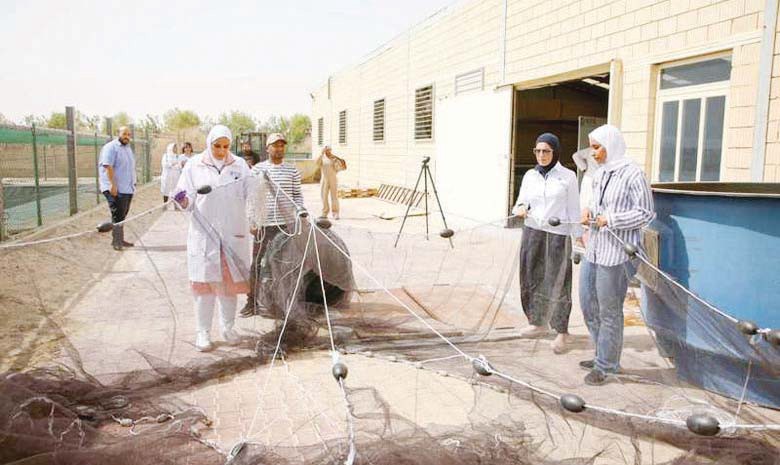13/08/2022
13/08/2022
KUWAIT CITY, Aug 13: The Kuwait Institute for Scientific Research announced the success of the experiment of cultivating vannamei (white leg) shrimps in commercial quantities, reports Al-Qabas daily. KISR sources told the daily there is government tendency to establish commercial firms to farm marine organisms and market the produce.

The daily during a visit to KISR saw the process of harvesting shrimps in external farm of the Institute in the Kabd. The workers there expect the farm to produce two tons per thousand square meters, while the survival rate of shrimp is 65%. KISR has imported the larvae from the Kingdom of Thailand. The size of a farmed shrimp was 15 cm, while its weight was between 15 and 16 grams.
The scientific researcher at the Environmental and Life Sciences Research Center at the Institute, Dr. Sherine Al-Subaie, said the aim of the project is to develop the importance of cultivating desert areas. Al-Subaie stated that the Research Institute was able yesterday to harvest semi-commercially farmed shrimp in the external farm, and that the harvested quantities will be transferred to two parts, the first of which is for study, data collection and laboratory analyzes and circulated to farms wishing to implement projects, and another part to be distributed within the institute and with government agencies to conduct experiments to find out consumer opinions and taste polls, especially that it is a new type of production cycle.
Production
The sources added that the shrimp culture cycle takes 4 months, but in the institute’s experience inside the Kabd region, a period of three months was sufficient for production to reach the required size and weight, which ranges between 15 to 16 grams. As for the cost of production, it indicated that it ranges between a dinar and a dinar and a half, and this depends on the type of feed and imported larvae, which is a variable number if there is a local feed factory and hatcheries in the country, indicating that the larvae used in the project were imported from Thailand because they are of high quality and possess certified hatcheries.


